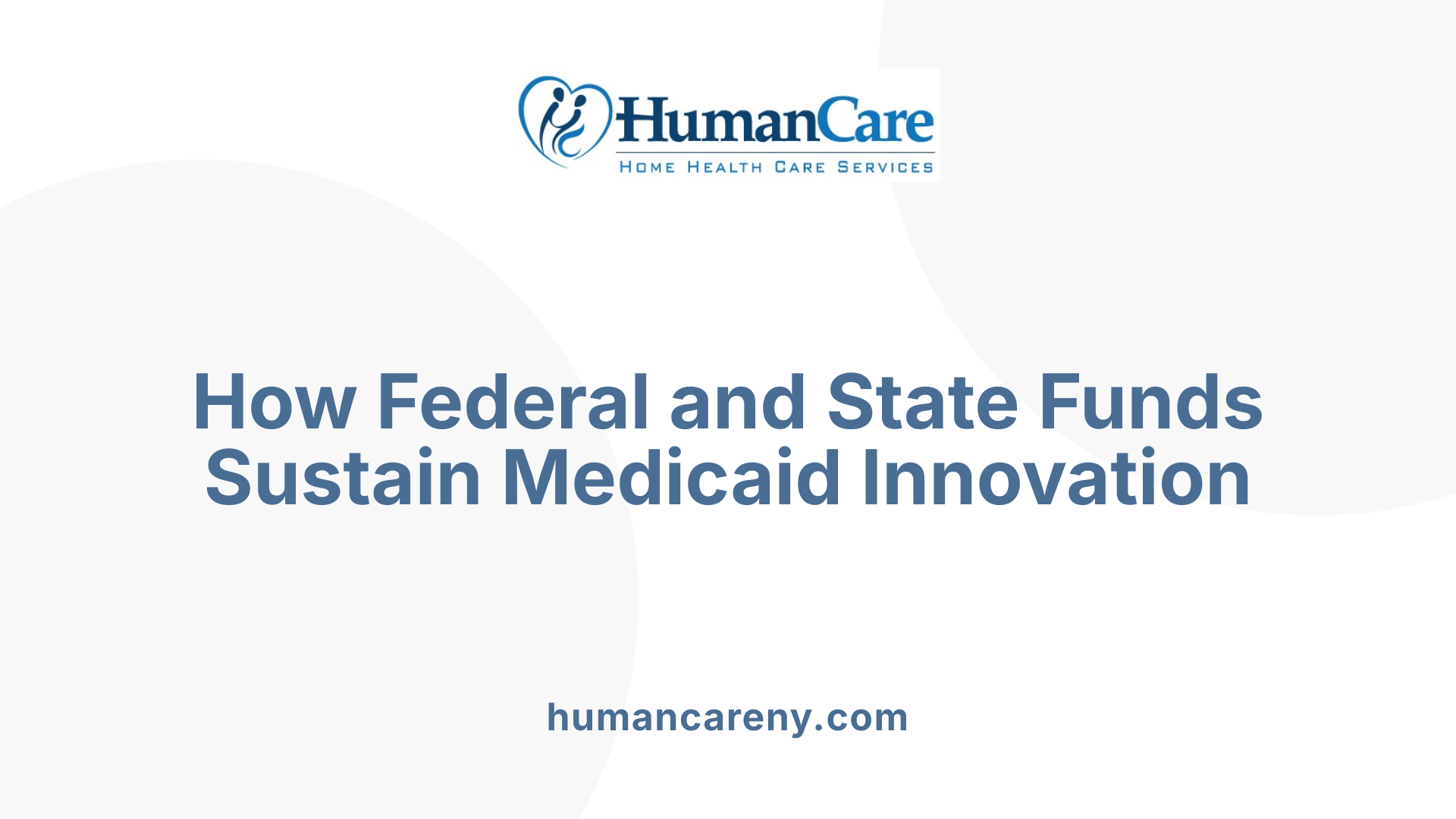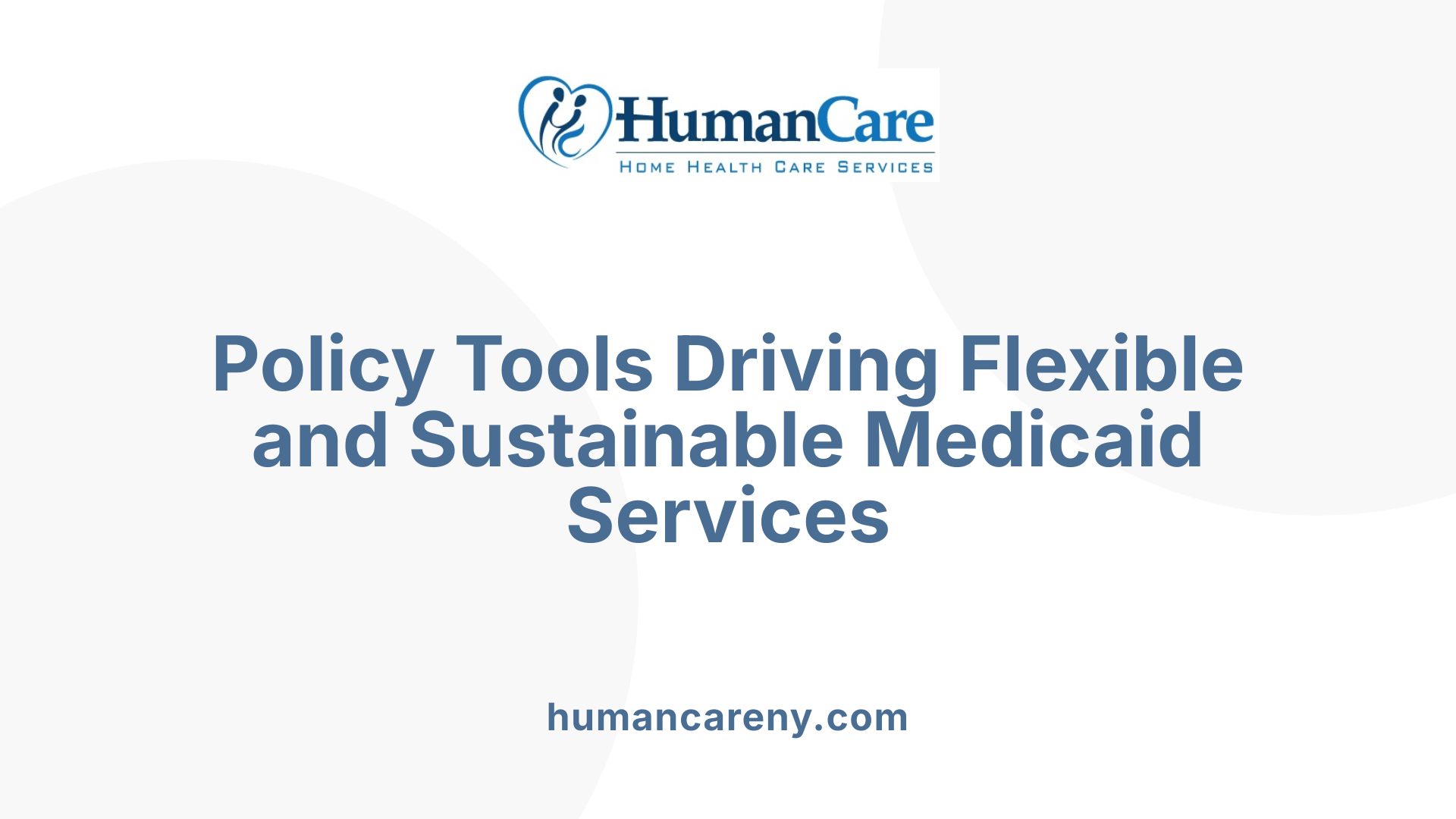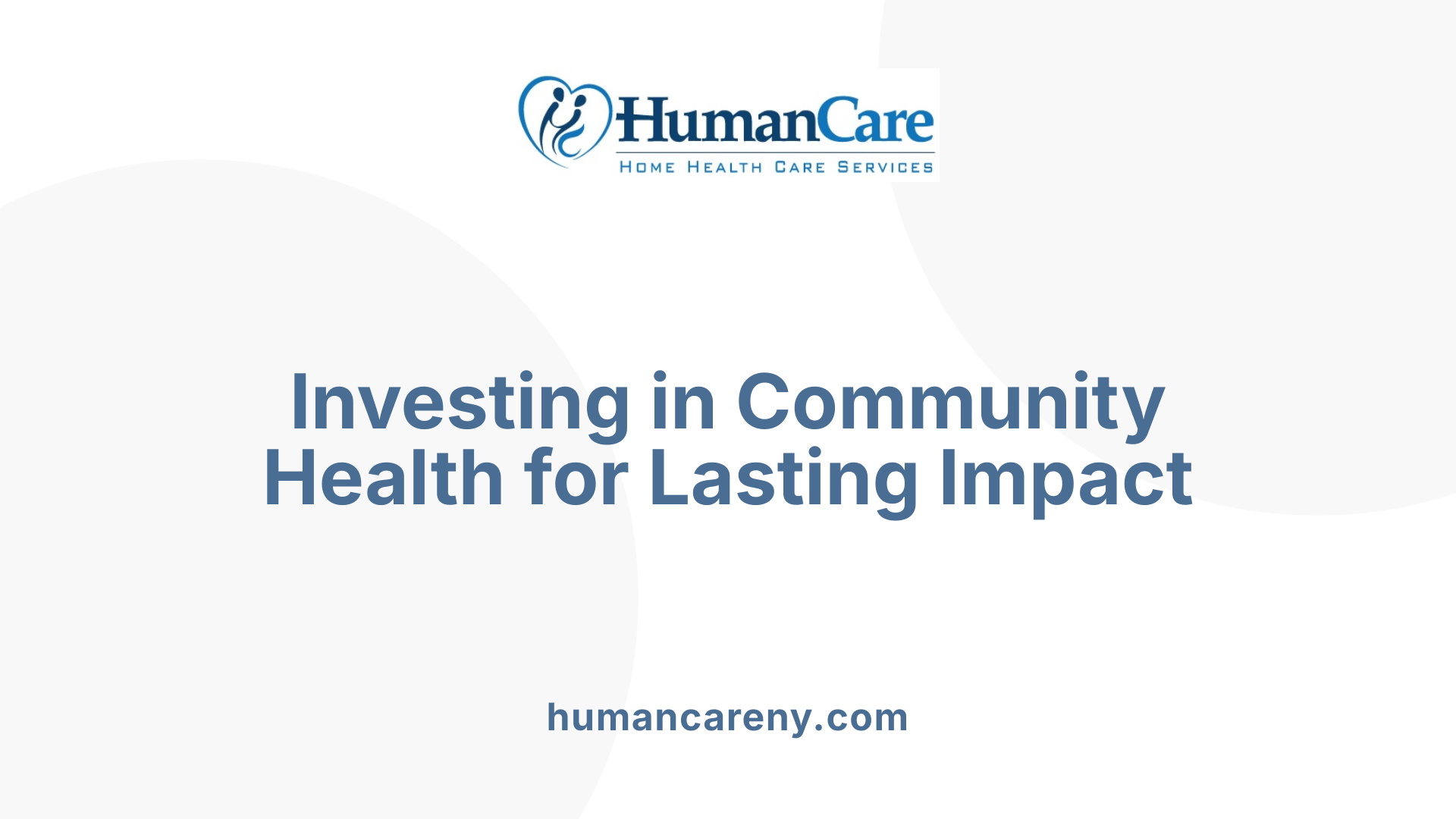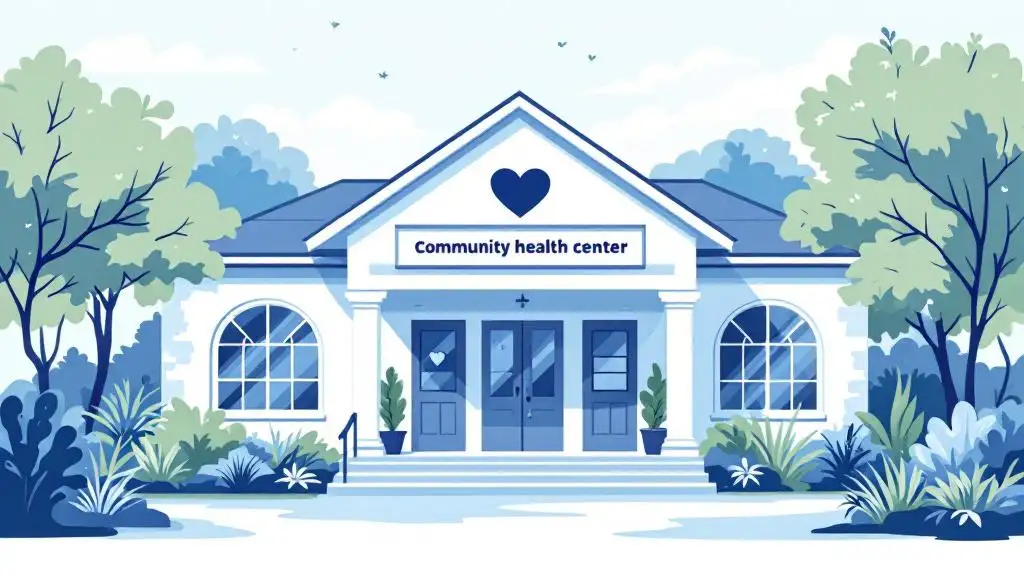Medicaid waiver program funding sources and sustainability
Funding and Future Perspectives on Medicaid Waivers

Understanding the Foundations of Medicaid Waiver Funding and Sustainability
Medicaid waiver programs serve as innovative tools allowing states to tailor Medicaid benefits and service delivery to meet specific population needs. Their financial backbone relies on a complex interplay of federal and state funding streams, policy tools, and strategic partnerships. This article explores the funding structure, strategies for ensuring long-term viability, and policy mechanisms supporting Medicaid waivers, offering insights into sustaining these critical programs amid evolving healthcare landscapes.
The Funding Framework of Medicaid Waiver Programs
 Medicaid waiver programs are financed through a mix of federal and state funding sources, which together enable states to provide specialized services tailored to their populations.
Medicaid waiver programs are financed through a mix of federal and state funding sources, which together enable states to provide specialized services tailored to their populations.
The primary federal contribution comes via the Federal Medical Assistance Percentage (FMAP), a rate that varies based on the state's income level. Typically, this rate ranges from 50% to 77% for the fiscal year 2026, with expanded programs and territories sometimes receiving different rates. These federal funds are the largest component, often covering a significant portion of the program's costs.
States supplement federal funding through various mechanisms such as provider taxes, intergovernmental transfers (IGTs), and other innovative revenue strategies. These tools help states meet the required match and fund additional services beyond federal contributions.
In addition, flexibility within federal guidelines allows states to design their Medicaid waiver benefits and service models. This discretion supports strategies like integrating social determinants of health and expanding services like personalized therapies and respite care.
In the fiscal year 2023, Medicaid spending reached approximately $880 billion, with about 69% federally funded through FMAP. This structure ensures that states can sustain programs that serve vulnerable populations effectively, including those with special needs or in high-risk communities.
| Funding Source | Description | Typical Contribution Rate | Additional Notes |
|---|---|---|---|
| Federal Medicaid Assistance | Main federal support based on FMAP, covering the bulk of costs | 50-77% depending on state | Subject to federal approval and variation |
| State Contributions | Via provider taxes, intergovernmental transfers, and other methods | Variable | Used to match federal funds and support services |
| Special Funding Programs | For expansion and territories, with different FMAP rates | Varies | Special rates may apply for specific populations |
Understanding these facets offers insight into how Medicaid waiver programs maintain financial sustainability while allowing flexibility to meet state-specific health needs.
Strategies for Achieving Long-Term Financial Sustainability

What strategies can ensure the long-term financial sustainability of Medicaid waivers?
Sustaining Medicaid waivers over the long term requires a multifaceted approach focused on flexibility, stakeholder engagement, and innovative funding sources. States should aim to enhance their managed care programs by increasing operational capacity and promoting adaptability to evolving healthcare needs. This includes ongoing collaboration with providers, policymakers, and community organizations to refine program designs.
A critical element is the diversification of revenue streams. Relying solely on traditional Medicaid reimbursements poses risks; thus, incorporating private pay services—such as personalized therapies or respite care—can generate additional income. Forming partnerships with local businesses, healthcare networks, and community groups can open new funding channels and resource-sharing opportunities.
Securing grants from federal, state, foundation, or technology-focused entities can provide initial funding for innovative projects or pilot programs. While grants are vital for start-up costs and bridging gaps, Medicaid funding remains essential for long-term stability. States can also enhance revenue by credentialing providers with private insurers, expanding service options with private insurance, and adopting new billing codes, like the recent Medicaid 'place of service' code for street medicine programs.
Cost management remains crucial. Implementing value-based payment models, which incentivize quality and efficiency, can reduce unnecessary expenses while encouraging social interventions that improve health outcomes. Payment strategies such as bonuses or shared savings linked to these outcomes can further incentivize provider participation.
Engagement with stakeholders at all levels is fundamental. Active collaboration with provider and health system leaders, coupled with data-driven decision-making, helps refine program efficacy and adapt to financial challenges. Regular review of program performance and adjusting policies accordingly ensures continued alignment with healthcare trends.
Finally, leveraging federal initiatives like Section 1115 waivers to promote social interventions, housing, and community support enhances program sustainability. These approaches collectively create a resilient funding environment capable of supporting diverse populations, including high-risk groups like individuals living with HIV or experiencing homelessness.
| Funding Source / Strategy | Description | Examples |
|---|---|---|
| Medicaid Reimbursements | Core funding through federal and state Medicaid funds | Medicaid waiver payments, managed care rates |
| Private Pay Services | Offering personalized therapies or respite care | Private therapy sessions, specialized support programs |
| Grants | Federal, state, foundation, tech grants | Pilot funding, technological enhancements |
| Partnerships | Local businesses and community organizations | Resource sharing, sponsorships |
| Private Insurance | Credentialing providers, expanding coverage | Expanded service options, new billing codes |
| Value-Based Payments | Incentives based on outcomes | Bonuses, shared savings |
| Social Interventions | Addressing social determinants of health | Housing support, food security programs |
| Federal Waivers | Section 1115, SPAs, demonstrations | Social services coverage, system reforms |
Building a comprehensive strategy that combines these elements can dramatically improve the chance of long-term viability for Medicaid waiver programs, ensuring they continue to serve vulnerable populations effectively.
Policy Tools and Funding Strategies for Medicaid Waivers

What policy tools and funding strategies support Medicaid waiver programs?
Medicaid waiver programs are supported by a variety of policy tools and funding strategies designed to make services more flexible and sustainable. One of the primary mechanisms involves federal and state funding sources, which provide the necessary financial backing for these initiatives. Federal programs, such as Section 1115 waivers, allow states to experiment with innovative models by obtaining CMS approval to fund services that go beyond standard Medicaid offerings. These waivers enable the development of tailored systems that can include housing support, mental health, or social services.
States also develop their own Medicaid rules around income, age, and disability criteria, which influence the scope and eligibility for waiver programs. Additionally, federal and state funds can be strategically used in demonstration projects to pilot new approaches, with the potential to expand successful models into permanent programs.
Funding strategies often focus on demonstrating cost-effectiveness. For example, they may involve waiving certain Medicaid requirements or using targeted budgets to fund specific services. Managed care arrangements, where Medicaid contracts with private organizations known as Managed Care Organizations (MCOs), also play a vital role. These contracts often include incentives—such as bonuses or shared savings—based on quality metrics or health outcome improvements.
Some states leverage Medicaid's flexibility to include social interventions directly in managed care rates, encouraging providers to address social determinants of health. Using these tools, policymakers aim to improve access, optimize resource use, and support innovative, community-based care models.
In summary, a combination of federal waivers, state-specific rules, demonstration projects, and managed care investments form a comprehensive toolkit for supporting sustainable Medicaid waiver programs that promote health equity and system efficiency.
Financing Mechanisms and Their Continued Viability
How are Medicaid waivers financed, and what is their ongoing viability?
Medicaid waivers are primarily funded through a combination of federal and state resources. The federal government provides matching funds through programs such as the Federal Medical Assistance Percentage (FMAP), which varies by state depending on income levels and other factors. These federal contributions support the additional services and innovations introduced via waivers.
States also contribute their own funds to support waiver programs. Together, federal and state partners work within the constraints of federal regulations to finance these initiatives. A key requirement for Medicaid waivers is maintaining budget neutrality — ensuring that the waiver does not increase total Medicaid expenditures over a baseline projection.
The ongoing viability of these waivers depends on several factors:
- Continued federal and state support and funding.
- Effective management to demonstrate cost neutrality.
- Achieving measurable health and social outcomes.
- Policy and legislative backing to sustain innovative care models.
Waivers enable states to test new approaches, such as integrating social services like housing and community supports, which can lead to better health outcomes and cost savings in the long run.
However, their future also relies heavily on the federal and state willingness to adapt to emerging healthcare needs, budget considerations, and political support. Legislative changes and budget priorities can influence whether these programs grow, are modified, or phased out.
In conclusion, Medicaid waivers are complex financing tools that blend federal and state contributions. While they offer opportunities for innovation and cost control, their sustainability hinges on consistent funding, proven outcomes, and the capacity to adjust to shifting policy landscapes.
| Funding Source | Description | Impact on Viability |
|---|---|---|
| Federal Medicaid matching | FMAP, varies by state | Critical for sustainability, dependent on federal budget priorities |
| State contributions | State funds allocated to Medicaid | Varies per state, influenced by state budgets and policies |
| Budget neutrality | Ensures waiver does not increase overall costs | Essential for ongoing approval and renewal |
| Policy support | Legislative and administrative backing | Necessary for continuation and expansion |
| Innovations and social integrations | Housing, social supports | Can improve outcomes and potentially reduce costs, influencing future funding prospects |
Expanding Service Flexibility and Integration
How do Medicaid waivers incorporate social determinants of health and social services?
Medicaid waivers have become vital tools for integrating social determinants of health (SDOH) into the healthcare system. These waivers allow states to broaden traditional medical coverage to include essential social services that influence health outcomes.
Under Medicaid, waivers such as Section 1115 provide immense flexibility, enabling states to fund programs that address housing, utilities, nutrition, and other social needs. For example, recent waivers approved under the Biden administration have permitted coverage of rent, utility bills, and meal support for populations with high needs.
States utilize these waivers to create a more holistic approach to health, acknowledging that factors like stable housing and proper nutrition are crucial for recovery and wellbeing. Such initiatives often involve supplementing standard Medicaid benefits with social supports directly tied to health outcomes.
In addition, Medicaid managed care organizations are increasingly required or encouraged to incorporate social interventions into their care models. Through value-based payment systems, providers are incentivized to address SDOS, with investments in social supports linked to better health metrics and shared savings.
These efforts demonstrate a shift toward viewing health as a social and environmental issue, not just a medical one. By embedding social needs into Medicaid programs through innovative waiver use, states can foster improved outcomes while potentially reducing overall healthcare costs.
| Policy Mechanism | Example Activities | Impact on Social Care |
|---|---|---|
| Section 1115 Waivers | Housing support, meal programs | Encourages funding for social interventions |
| State Plan Amendments | Permanent inclusion of CHWs | Stabilizes social services in benefits |
| Medicaid Managed Care | Social support integration | Incentivizes comprehensive care |
Expanding social and health coverage within Medicaid through waivers enhances the program’s capacity to serve vulnerable populations, emphasizing a broad definition of health that includes social wellbeing.
The Role of Federal Oversight and Policy Frameworks
What impact do federal policies and oversight have on the viability of Medicaid waivers?
Federal policies and oversight play a fundamental role in shaping the sustainability and scope of Medicaid waiver programs. The approval process for waivers, managed by the Centers for Medicare & Medicaid Services (CMS), ensures that states adhere to federal standards regarding quality, budget neutrality, and program integrity. This process involves comprehensive review of proposed services, financial arrangements, and operational plans.
Federal support for social interventions has increased, especially under recent administrations. For example, the Biden administration approved 18 waivers under the Home and Community-Based Services (HRSN) framework, enabling coverage of housing, utilities, and meal support for high-need populations. Such actions reflect a federal commitment to integrating social determinants of health into Medicaid, expanding beyond traditional medical services.
Budget neutrality remains a key consideration. It requires that waiver proposals demonstrate no additional net cost to the federal government compared to baseline projections. This constraint influences how states design programs and choose services, including those aimed at social supports.
Policy shifts also impact funding mechanisms. During the Trump era, emphasis was placed on work requirements and eligibility restrictions, with limited support for social determinants. Conversely, the Biden administration’s approach fosters broader investments, including funding from programs like Designated State Health Programs, which aim to promote health equity.
Overall, federal oversight ensures that Medicaid waivers serve public health goals efficiently while maintaining financial safeguards. Collaboration between federal and state agencies is essential to developing innovative, sustainable programs that meet diverse population needs.
| Aspect | Description | Example |
|---|---|---|
| Approval Process | CMS reviews waiver proposals for compliance with federal standards | Approval of HRSN waivers in 2023 |
| Budget Limits | Waivers must be budget neutral, balancing costs | Demonstration periods of 3-5 years |
| Support for Social Services | Federal agencies fund programs addressing social determinants | Biden-approved waivers for housing, utilities |
| Policy Shifts | Changes in federal stance influence program scope | Trump vs. Biden administration approaches |
Understanding these oversight mechanisms is vital for stakeholders aiming to expand and sustain Medicaid initiatives that address social needs, ultimately contributing to healthier communities.
Emerging Trends in Medicaid Waiver Programs
What are the emerging trends affecting the sustainability of Medicaid waivers?
Recent developments in Medicaid waiver programs demonstrate a shift toward more flexible and innovative approaches to healthcare financing and delivery. A prominent trend is the increased use of Section 1115 waivers, which allow states to test and implement broader reforms than those permitted under standard Medicaid rules. These waivers enable states to integrate social and health services, addressing social determinants like housing, nutrition, and utilities, which play a critical role in long-term health outcomes.
Additionally, there's a noticeable growth in programs that emphasize social and health integration. States are developing initiatives that incorporate social support services directly into Medicaid benefits, reflecting a holistic view of healthcare that moves beyond traditional medical treatment. These efforts aim to improve quality of life and reduce healthcare costs by addressing root causes of poor health.
To support these innovative models, new financing approaches are emerging. Social impact bonds, community donations, and blended funding models are increasingly utilized to diversify revenue sources. These mechanisms reduce dependency on federal and state funding, offering more sustainable financial pathways while fostering community and stakeholder engagement.
Despite these advancements, there are significant challenges to ensuring the long-term viability of Medicaid waivers. Political changes, budget limitations, and the need for rigorous evaluation to demonstrate value pose ongoing risks. However, the continuous innovation in program design, coupled with strong policy support, is vital for overcoming these obstacles.
The Biden administration’s approval of multiple waivers under the Healthy Resilient States Network (HRSN) framework exemplifies this trend, allowing coverage for essential social services. Similarly, the use of Medicaid authorities like State Plan Amendments and managed care contracts facilitates the integration of social interventions into mainstream Medicaid operations.
| Trend | Description | Impact |
|---|---|---|
| Use of Section 1115 Waivers | State-specific waivers for program reforms | Experimentation and expansion of social and health services |
| Social and health integration | Combining healthcare with social support | Improved health outcomes and potential cost savings |
| Diversified financing | Use of bonds, donations, and blended funds | Reduced reliance on federal/state budgets |
| Policy and evaluation | Need for ongoing assessment | Ensures sustainability and demonstrates program value |
Looking ahead, the focus remains on balancing innovation with sustainability. Policymakers, providers, and communities must work together to develop frameworks that support the long-term success of Medicaid waiver programs, ultimately leading to more comprehensive and equitable healthcare systems.
Building the Case for Long-Term Investment in Community Health Workers and Social Services

Why is long-term support for social services and community health workers vital for Medicaid waiver success?
Sustained funding for social services and community health workers (CHWs) plays a pivotal role in the success of Medicaid waiver programs. These programs aim to improve health outcomes for high-risk populations, such as those experiencing homelessness or living with chronic conditions. CHWs serve as vital connectors, providing personalized support and addressing social determinants of health that traditional medical services may overlook.
Evidence from pilot projects across several states shows that investing in CHWs can lead to significant cost reductions. For example, programs that incorporated CHWs reported lower rates of hospital readmissions and emergency room visits.
Medicaid’s flexible funding mechanisms, including Section 1115 waivers and State Plan Amendments, enable states to support these workforce strategies effectively. Moreover, innovative payment models like value-based payments provide incentives for providers to invest in social interventions that improve health outcomes.
Long-term strategies also involve building a solid business case. Data demonstrating return on investment (ROI) helps secure ongoing funding from both public and private sources, ensuring that these essential social services are embedded into routine healthcare delivery. Overall, continuous support for CHWs and social services fosters community resilience, reduces healthcare costs, and promotes equitable health outcomes.
Blended and Braided Funding Approaches for Sustainability
How can blended and braided funding methods support the sustainability of Medicaid waiver programs?
Blended and braided funding approaches are innovative strategies for supporting healthcare programs, especially those involved with Medicaid waivers. These methods involve the combination of multiple funding streams—including Medicaid funds, social services grants, foundation donations, and community contributions—to create a diversified financial base.
This approach reduces reliance on a single source of funding, which can be risky if that source faces cuts or policy changes. Instead, programs can spread their financial support across various channels. For instance, Medicaid funds might cover clinical services like primary healthcare or specialized therapies. Simultaneously, social service grants and community donations could fund essential social support services such as housing, transportation, or nutritional programs.
Programs that use blended funding tend to be more resilient and adaptable. They can better weather economic fluctuations and policy shifts because they are not tied to one funding stream alone. Additionally, combining diverse sources often encourages more innovative care models, which can better address the social determinants of health.
A practical example is a community health initiative that relies on Medicaid funding for medical services, leverages foundation grants for housing programs, and receives donations from local organizations to support nutritional needs. This comprehensive funding model enables the program to deliver more holistic care without breaching budget limitations.
Implementing blended funding requires strong coordination and clear governance to manage the different sources effectively. Stakeholders must ensure compliance with various regulations, reporting standards, and accountability measures.
Ultimately, these approaches reinforce the financial stability of Medicaid waiver programs, allowing them to expand services and improve health outcomes sustainably. As policy environments evolve, diversified funding remains critical for long-term program success.
| Funding Source | Primary Use | Contribution to Sustainability |
|---|---|---|
| Medicaid Funds | Clinical services | Core source; ensures medical aspect of care is covered |
| Social Service Grants | Social supports, housing, nutrition | Addresses social determinants, enhances social stability |
| Community Donations | Supplementary services | Increases flexibility and community engagement |
| Foundations | Pilot projects, innovations | Promotes innovative approaches and risk-taking |
This multi-faceted financing framework exemplifies how combining funds from various channels can help programs remain financially viable and better tailored to community needs.
For more detailed insights, conducting searches with terms like "Blended funding approaches for Medicaid waivers 2023" can provide up-to-date examples and case studies, underscoring the importance of diverse funding mechanisms in contemporary healthcare.
Innovations in Service Delivery and Payment Models
What are recent innovations supporting Medicaid waiver program sustainability?
Recent developments in Medicaid funding and service delivery have significantly bolstered the sustainability of waiver programs. One major innovation is the expansion of home and community-based services (HCBS), which prioritize care in familiar, community settings that are often more accessible and less costly than institutional care.
Another important advancement is the adoption of value-based payment models. These models shift the focus from volume to quality, incentivizing providers to deliver services that improve health outcomes and social well-being. For example, payments can include bonuses or shared savings for reducing hospital readmissions or enhancing vulnerable populations' health, such as people living with HIV.
A notable recent change is the introduction of new billing codes, like the 'place of service' code (#27), announced in October 2023. This code allows healthcare professionals to be reimbursed for services provided to unsheltered homeless individuals in non-permanent locations, supporting street medicine initiatives.
These innovations collectively promote flexible, community-responsive care. They enable programs to adapt dynamically to specific community needs, improve provider engagement, and demonstrate cost-effectiveness. As a result, they strengthen the long-term viability of Medicaid waiver programs by aligning financial incentives with community health outcomes.
How do these innovations support program growth?
By expanding service options and creating new reimbursement avenues, these innovations make it easier for programs to secure funding and sustain operations. They also foster collaboration among healthcare, social services, and community organizations.
Innovative billing codes and value-based models encourage providers to implement social interventions that address social determinants of health, ultimately leading to better health results and cost savings.
This evolving landscape of service delivery and payment models offers promising avenues for strengthening Medicaid's role in comprehensive, community-centered care.
| Innovation Type | Description | Impact |
|---|---|---|
| Home & Community-Based Services | Shift care to community settings | Reduced institutional costs, increased accessibility |
| Value-Based Payments | Incentivize outcomes over services | Improved health and social outcomes |
| New Billing Codes (#27) | Reimburse for street medicine services | Better support for homeless populations |
Understanding these trends helps policymakers and providers craft sustainable, innovative approaches to Medicaid funding, ensuring care remains effective and community-focused.
The Impact of Federal Support and Policy Demographics
How does federal support influence the sustainability of Medicaid waivers?
Federal support plays a crucial role in ensuring the long-term viability of Medicaid waiver programs. These waivers often represent the largest federal source of funding assistance, especially for services like respite care and social interventions.
During recent years, federal policies have shifted with varying emphasis under different administrations. The Biden administration strongly endorsed using Medicaid waivers to address social determinants of health, approving 18 waivers under the HRSN framework. These approvals allow coverage for essential social supports, such as rent, utilities, and food, benefiting high-need populations.
In contrast, the Trump administration limited federal involvement, focusing instead on work requirements and eligibility restrictions, effectively phasing out funding and support for programs that address social determinants. They viewed funding for social initiatives more as a financing tool rather than a sustainable program element.
Federal oversight through agencies like the Centers for Medicare & Medicaid Services (CMS) ensures that waiver programs align with national health and social priorities. They provide essential resources, approve policies, and guide states on implementing innovative approaches. Policies like Section 1115 waivers, State Plan Amendments, and managed care contracts facilitate system reforms and secure funding for programs such as Community Health Worker (CHW) initiatives.
Moreover, federal support mechanisms such as Designated State Health Programs (DSHPs) and grants can stimulate investments in social interventions and help bridge funding gaps. Although some programs, like federal community grants, are temporary and require continual renewal, they play a vital role in pilot projects and initial program development.
Overall, sustained and adaptive federal support, guided by clear policy frameworks, is vital for the ongoing success and expansion of Medicaid waivers. These policies underpin efforts to integrate social and healthcare services, reduce disparities, and support vulnerable populations.
Additional Funding Sources and Policy Adaptations
States can convert waivers to permanent plans or incorporate social services into Medicaid managed care structures, further stabilizing funding streams. High-level policy initiatives, such as value-based payments, incentivize healthcare providers and plans to invest in social supports, tying financial health with health outcomes.
As government policies continue to evolve, maintaining a robust federal involvement remains the cornerstone of Medicaid waiver sustainability and the expansion of social interventions within healthcare systems.
Conclusion: Ensuring the Future of Medicaid Waivers
What are the key factors influencing the future sustainability of Medicaid waivers?
The long-term success of Medicaid waivers depends on several critical factors that collectively shape their sustainability. One of the most important aspects is the ability to develop effective policy support. This involves adapting existing regulations, such as Section 1115 waivers and State Plan Amendments, to meet changing healthcare needs and political climates.
Equally vital is diversifying funding sources. Relying solely on federal Medicaid funds can be vulnerable to policy shifts and budget cuts. Incorporating private pay options, including personalized therapies and respite care, extends revenue streams. Securing grants and fostering social impact investments—like social impact bonds and community donations—can also provide crucial financial backing. Building partnerships with local businesses, healthcare networks, and community organizations further enhances resource sharing and grants access.
Addressing challenges such as political changes, budget limitations, and the increasing complexity of healthcare demands calls for innovative solutions. Implementing value-based payments and incentives can promote investments in social determinants of health, such as housing and social services, which are increasingly recognized as vital to overall health outcomes.
Opportunities also exist for leveraging federal support for social determinants of health through programs approved by the Biden administration, which include coverage for rent, utilities, and meals. These initiatives, combined with state-level customization of waiver criteria and eligibility, allow states to tailor programs for their populations.
To navigate these complexities, building resilient financing mechanisms—like integrating CHWs into Medicaid models via MCO contracts or fee-for-service reimbursements—and developing a strong business case for continued investment in social and health services are essential.
Strategic stakeholder engagement, policy flexibility, and innovation in payment models will be central to sustaining waivers. By focusing on expanding social and healthcare integration, leveraging federal and private investments, and fostering collaborative multi-sector efforts, Medicaid waivers can adapt to future healthcare landscapes and continue their vital role in supporting vulnerable populations.
Charting the Path Forward for Medicaid Waivers
The sustainability of Medicaid waiver programs depends on strategic policy initiatives, diversified and innovative funding streams, and robust stakeholder partnerships. Embracing social determinants of health, adopting value-based care, and leveraging federal support are critical to expanding and strengthening these programs. As healthcare challenges evolve, continuous adaptation and investment in community-based care models will be essential to secure their long-term future and maximize their impact on vulnerable populations.
References
- Diversifying Funding Sources for Waiver Providers
- 1915(c) HCBS Waiver Payments and Financing Trends ...
- Financing Mechanisms for Street Medicine and Other Low- ...
- Medicaid Waivers for Respite Support
- Sustainable Investment Social Interventions in Medicaid
- Section 1115 Waiver Watch: Early Signs Point to New ...
- SUSTAINABLE FINANCING
- Sustaining Program-Funded Activities
- Sustainable Financing Approaches for Medicaid Managed ...



































































































